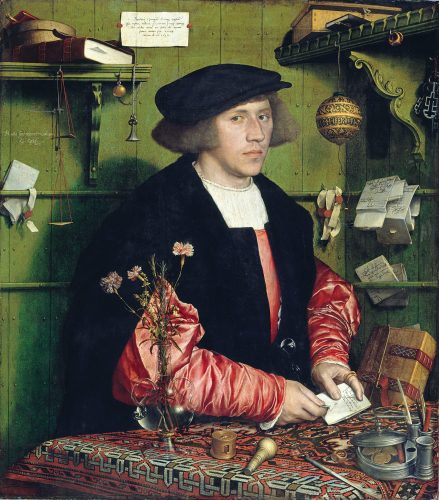Maritime trade in Europe was dominated by the Hanseatic League well into the sixteenth century. The League began as a German coalition of guilds and market towns stretching along the coast of northern Europe. Its London base was known as the Steelyard, on the north bank of the Thames. This portrait by Holbein was painted while the sitter, Georg Gisze, was stationed at the Steelyard.
The portrait is cluttered with papers: tucked into books, and hung or stuck around the walls. The paper fixed with sealing wax above his head tells us his name, and that he is 34 years old at the time of painting. The other papers are mostly letters, written by correspondents across Europe. He holds a letter from his brother; other letters variously spell his name ‘Gisze’, ‘Giese’, or ‘Gyse’, suggesting multilingual sources. The key to a merchant’s success was to stay well-informed, which was achieved through extensive networks of correspondence. The wary expression on Gisze’s face, as well as the emphasis on the rich textures of his clothing and his external accoutrement, suggest the overlap between Holbein’s vision of courtiers and of merchants. The affinity hints at the need to present the self through careful fashioning, and to protect its inwardness through inscrutability, in both the royal court and the spaces of commerce.











